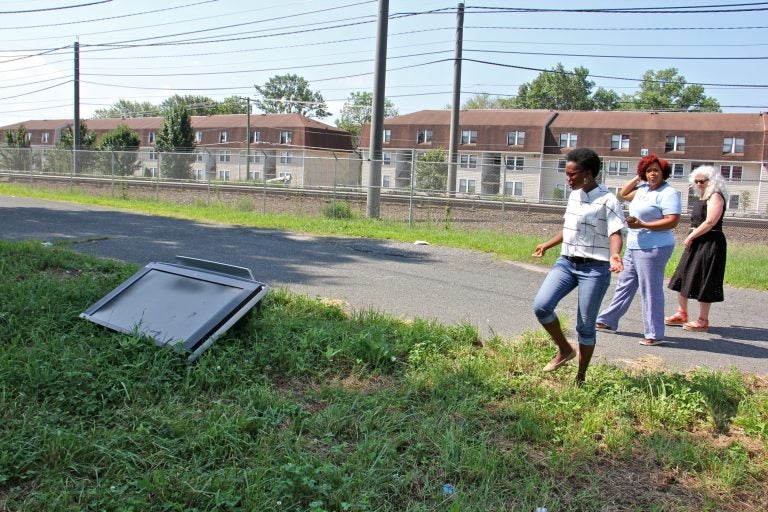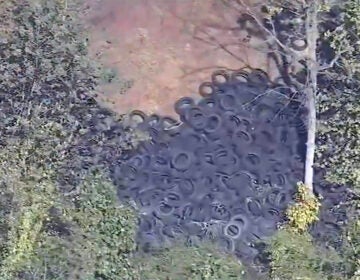Camden asks artists to transform illegal dumping sites
The City of Camden plans to turn illegal dumping sites into public art spaces near major transportation corridors in hopes to change people’s perceptions of the city.
Listen 1:44
A discarded television lies in a vacant lot off Pershing Street near the PATCO rail tracks. Activists (from left) Vedra Chandler, Meishka Mitchell and Noreen Scott Garrity, are working to stop the practice of illegal dumping on Camden lots. (Emma Lee/WHYY)
Maxine Ford has been living in Camden’s Whitman Park neighborhood for 37 years, and she’s fed up with seeing trash. Just yards from her front door is a nearly empty lot. It’s mostly clean, but there are some tires, a TV and contractors bags tucked away behind a tree.
“I don’t know who does it, but I come out and look and I know the city just cleaned it because I seen them clean it,” Ford said. “As soon as they clean it, they dump.”
Illegal dumping is a serious problem in Camden. The City spends about $4 million to clean up piles of trash each year. The city has bumped up trash pickup to two days a week, but many of the dumped items like tires and TV’s don’t qualify for curb pickup and can be expensive to dispose of properly.
The City of Camden, Cooper’s Ferry Partnership and Rutgers-Camden Center for Arts have teamed up to turn some notorious dumping sites into public art spaces.
Funded by the Bloomberg Philanthropies Public Art Challenge, “A New View” project calls for artists to reimagine dumping spots in high-traffic areas.
Meishka Mitchell, Vice President at Cooper’s Ferry Partnership, said she hopes the art changes people’s perceptions of the city.
“If you are living in a neighborhood where you know people are coming in and dumping on your neighborhood on a regular basis you know you have to think about what is the message being sent to the people who live there about their own communities if everyone is seeing it as a dumping ground,” Mitchell said.
The lot near Ford is just one of six sites chosen for the project.
WHYY is your source for fact-based, in-depth journalism and information. As a nonprofit organization, we rely on financial support from readers like you. Please give today.





